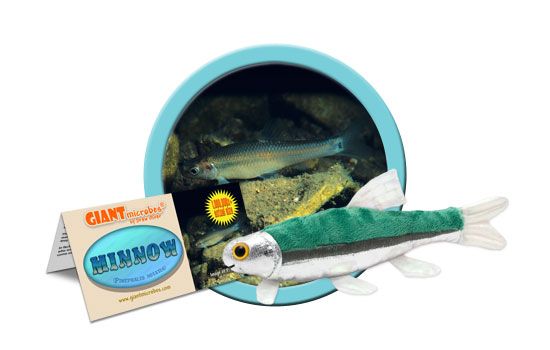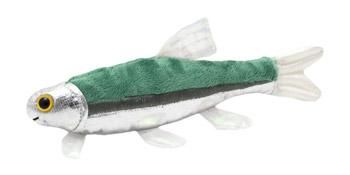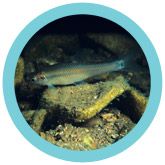Minnow (Pimephales notatus)
Product Details
Additional Information
| Sizes | Giantmicrobes are based on actual microbes, cells, organisms and other critters, only 1,000,000 times actual size! Gigantic (GG) 16-24" XL (XL) 10-15" Original (PD) 5-8" Keychain (KC) 2-4" with clip |
|---|---|
| Materials | Plush from all new materials. Stuffed with polyester fiber fill. Surface washable: sponge with water & soap, air dry. |
| Packaging | Each plush microbe includes a printed card with fun, educational and fascinating facts about the actual microbe or cell. |
| Safety | Every product meets or exceeds U.S. and European standards for safety. For ages 3 and up. |
All about Minnow (Pimephales notatus)
FACTS: Minnows are small fish! Because of their diminutive size, the word minnow is often used derogatorily by the world's sharks. But minnows have much to be proud of.
There are hundreds of varieties, though Cyprinidae (or carp) are generally regarded as the true minnows. They can live in oceans, streams, rivers, ponds, lakes, bogs, and swamps. Some swim in schools; some are loners.
Some like it cold, some it like hot – when it comes to water temperature. They normally live between 3 and 10 years.
They are often silvery, though not always. In fact, goldfish are cyprinids too! Minnows are too small to be game fish, but unfortunate minnows very frequently end up being used as bait.
Most minnows are gentle herbivores, eating algae and small eggs. But some prefer small crustaceans and insect larvae. Some minnows build houses out of stones (for their eggs); some dig pits in the sand. Some "borrow" other fishes’ houses.
They can speak by making pulsed noises, particularly when challenging fellow males. They can also change coloration, when they're feeling amorous. And they can release chemicals when they're feeling afraid.
In fact, some scientists think the chemicals may serve to summon larger fish, who will prey upon their predators, allowing the minnows to escape. ("Sharks come over!")






